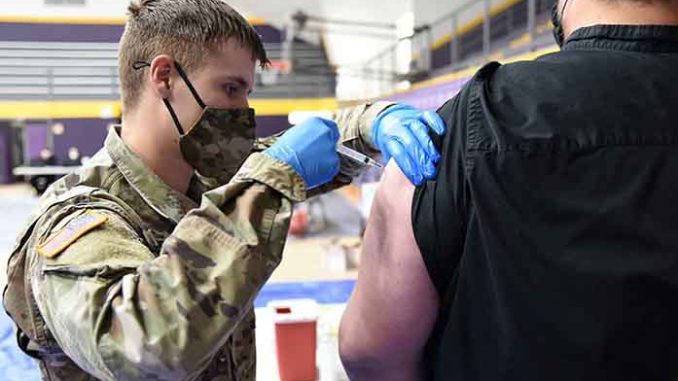
Are you confused about claims about death rates in vaxxed vs. unvaxxed?
The chart that I posted previously, which showed that all-cause mortality is twice as high in persons receiving the COVID-19 vaccine, got more than a million hits. And a storm of criticism. As former New York Times reporter and science writer Alex Berenson, who first posted the chart, acknowledged, he (and I) fell into a common statistical trap called Simpson’s Paradox: Conclusions derived from the whole group may be the opposite of those reached from a more detailed analysis. That’s because of “confounders”—overlooked variables that can influence both supposed cause and supposed effect.
Are there differences between 10-year-olds and 59-year-olds who die, other than COVID vaccination status? Huge differences. So why the age range of 10–59 in the table that we used? The Office of National Statistics (ONS), an official agency of government in the UK, used it. Ask them why.
The chart attracted so much interest and fury because it contradicts the narrative that COVID vaccination protects you from death. A recently published NPR article “Pro-Trump counties now have far higher COVID death rates. Misinformation is to blame,” which is even quoted by Breitbart, proclaims that residents of counties that voted heavily for Trump were 2.7 times as likely to die of COVID-19 (NOT 2.7 times more likely to die of something) than those that went for Biden. Trump voters are more likely to be unvaccinated, they say. These authors assume that “correlation reflects causation”—a blatant contradiction of the most basic tenet of statistics. They make no attempt to correct for confounders or bias, errors beyond the mere Simpson Paradox. And yet there is no avalanche of criticism this time.
There’s a similar story with this graph from Germany:

The size of the blue dots represents population in the 16 federal areas. The graph plots the 2021 all-cause death rate as a percentage of the 2016–2020 average versus the COVID-19 vaccination rate in various areas.
Note that ALL areas had a higher mortality than the previous average, which was defined as 100%. The scale goes from 102.5% (2.5% more than the previous average) to more than 115% (15% more than the previous average).
The correlation coefficient between mortality rate and vaccination rate is 0.31, meaning that about 30% of the difference in mortality can statistically be attributed to the vaccination rate, and about 70% to other things. In their original note, the authors stated that there were other possible explanations for the obvious fact that the correlation goes in an unexpected direction: the higher the vaccination rate, the higher the excess mortality. Under duress, they later published a detailed disclaimer. The correlation does not prove that excess mortality is caused by vaccination. On the other hand, vaccination cannot be shown to decrease mortality, since mortality increased.
So, what can we conclude from the statistics? First, proceed with caution. We need teams of expert, independent statisticians with access to ALL the raw data. As one expert put it: The validity of the statistics depends on the validity of the data.
Is death “from” (which brings greater pay to hospital) or “with” COVID (say a positive test in a car crash victim)? Is the patient “vaccinated” (had last shot more than 2 weeks before diagnosis) or “unvaccinated” (hasn’t received all the shots more than 2 weeks prior to diagnosis and before the expiration date)? Without knowing these things, we cannot reach valid conclusions.
Moreover, it is impossible to know long-term effects now—without having a time machine.
Important questions all should ask:
- How many patients, especially children, are experiencing heart damage? How many have been checked, as with troponin levels or the PULS test, for asymptomatic myocarditis?
- Have fertility clinics been surveyed? Is the statement that vaccinated sperm donors are being rejected because “their swimmers aren’t swimming” a mere unsupported rumor or anecdote? The CDC says there is “no evidence “ for a problem, citing a study of only 45 men.
- Are pathologists seeing more suddenly appearing new or recurrent cancers in vaccinated persons, or is this just an “outlier” observation by a few patients or pathologists?
- How frequent is vaccine-induced immune thrombotic thrombocytopenia (VITT), which can cause bleeding and clotting, with strokes and other serious problems, and how should we deal with it?
Each person has a fundamental human right to decline an injection and to receive an honest account of known and unknown risks.
Jane Orient, M.D., Executive Director, Association of American Physicians and Surgeons, jane@aapsonline.org
